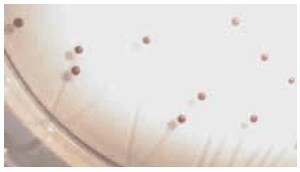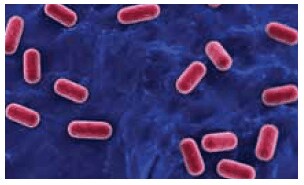Probiotics in the Food Industry
Probiotics take on a key role in the functional food industry
The name “Probiotics” is derived from Latin (pro) and Greek (biotic) roots meaning “for life”. Probiotics are defined as live bacteria with beneficial effects to the health of the host organism. Today, primarily lactic acid bacteria (LAB) and bifidobacteria are used as probiotics, however certain yeasts and bacilli are also known to have positive effects. In most cases, probiotics are produced directly by fermentation in foods such as yogurt, or are supplied through dietary supplements. Although the term “Prebiotics” is also used often in such cases, the two terms should not be confused, since “prebiotics” actually refers to non-digestible compounds that stimulate the growth and/or activity of probiotics in the gut. Prebiotics are frequently used in functional food, and typically consist of oligosaccharides. Prebiotics can be found in milk (galactooligosaccharides, or GOS) and plants with dietary fibers, however they are often produced by fermentation.
At the beginning of the 20th century, probiotics were thought to have a beneficial affect to the host by improving the intestinal microbial balance. At that time, it was observed that lactic-acid bacteria inhibit the growth of proteolytic bacteria due to low pH. Through his studies and observations, the Russian biologist Metchnikoff noted that people from cultures which consumed large amounts of fermented milk, for example those in Bulgaria and the Russian steppes, generally had a higher life-span. Therefore, he proposed that lactic-acid bacteria decrease the intestinal pH as a result of fermentation, thereby suppressing the growth of proteolytic bacteria. Metchnikoff propagated the consumption of sour milk fermented with the Lactobacillus bulgaricus 5 as a means of promoting intestinal balance and overall health.
Today, diverse studies report the benefits of probiotics, such as inhibitory effects on pathogens, aid in the management or prevention of chronic intestinal inflammatory diseases or of atopic diseases, and support to the immune system. Potential beneficial applications abound, and the research around this topic continues to expand.
Recently, scientists in Finland have discovered that cheese can help preserve and enhance the immune system of the elderly by acting as a carrier for probiotic bacteria. The research showed that daily consumption of probiotic cheese helps to bolster immunity in elderly people. Cheese was confirmed to be an effective carrier for probiotics.1
Bifidobacteria
Bifidobacterium is one of the most important probiotic bacteria used in the dairy industry. They are Gram-positive, non-motile, rod-shaped, and often branched anaerobic bacteria. They were first isolated from a breast-fed infant by Henry Tissier from the Pasteur Institute. At that time, Tissier named the organism Bacillus bifidus communis.6 Bifidobacteria have a positive affect on the immune system and help to control intestinal pH . In additional, bifidobacteria produce bacteriocins and bacteriocin-like inhibitory compounds which inhibit the growth of other bacteria.
Bifidobacteria posesses many glycosylases able to degrade various plant- or milkderived oligosaccharides. Several such enzymes were identified on the Bifidobacterium genome. Also diverse glycosyl hydrolase, ABC transporter and the fos gene cluster that is involved in the processing of health-promoting fructooligosaccharides (prepiotics), called bifidogenic factors, can be found on the genome.10 Obviously Bifidobacteria are able to utilize a broad range of substrates as energy sources, such as plant polymers, glycoproteins and glycoconjugates, as well as having specialized proteins for the catabolism of oligosaccharides.
Bifidobacteria also have a unique hexose metabolism called the bifid shunt. The key enzyme, fructose-6-phosphate phosphoketolase is not found in any other Gram-positive intestinal bacteria and therefore provides an ideal target for a diagnostic test. It was found that live B. lactis bacteria can directly counteract the harmful effects of coeliac-toxic gliadin and this may prove to be a future potential treatment of coeliac disease.9
In adult intestines, only 3-6% of the fecal flora is composed of Bifidobacteria, while in breast-fed infants Bifidobacteria can constitute up to 90%. With increasing age, the number of Bifidobacteria decreases. It was observed that babies and adults with lower numbers of Bifidobacteria have a higher risk for diarrhea and allergies. For this reason, Bifidobacteria are added as a probiotic supplement to infant formulas, drinks, yogurts and a range of other products.
Because of the wide use of bifidus, we have developed a Bifidobacteria Selective Media (BSM), available as an agar or a broth, as a standard for quality control. This medium allows for easy and fast quality control of yogurt made with bifidus and can be used to control the count of bifidus bacteria.
Bifidobacterium grow very well on this medium, while Lactobacillus and Streptococcus strains are inhibited. Bifidobacterium colonies grow within 24-48 hours (occasionally up to three days because of the highly selective conditions). The Bifidobacterium colonies are purple-brown and therefore are easy to differentiate from other organisms.
In a Swiss governmental evaluation study for the enumeration of bifidobacteria in sour milk products, the traditional method was compared to Wilkins-Chalgren Agar with 100 mg/L mupirocine and BSM Agar. The traditional method produced statistically significant differences, while Wilkins-Chalgren Agar and BSM Agar showed similar results without any significant variances. The study concluded, “On the BSM Agar, the bifidobacteria forms purple-brown colonies which made the enumeration easy”.3
Lactobacillus Species
Lactobacilli are rod-shaped, Gram-positive, fermentative, facultative anaerobic or microaerophilic organotrophs. Normally they form straight rods, but under certain conditions spiral or coccobacillary forms have been observed. In most cases, they form chains of varying length. Lactobacilli belong to the lactic acid bacteria and comprise the major part of this group. As their name implies, they produce lactic acid and derive energy from the fermentation of lactose, glucose and other sugars to lactate via homofermentative metabolism. About 85-90% of the sugar utilized in the fermentative process is converted to lactic acid. However, there are some heterofermentative lactobacilli that produce alcohol in addition to lactic acid from sugars. This acidproducing mechanism inhibits growth of other organisms and favors the growth of lactobacilli that thrive in low pH environments. ATP is generated during the process by non-oxidative substrate-level phosphorylation.
Some strains of lactobacilli were shown to produce, like bifidobacteria, a bacteriocin-like substance and are able to inhibit a broad range of pathogens. Lactobacilli also produce adhesins (proteins), which perform a vital role in recognizing specific host components (extracellular matrix) important for the bacterial adhesion and colonization at host surfaces, as well as in bacterial interaction with physiological and immunological processes.8
In the last several years, several new Lactobacillus species have been introduced as probiotics, including Lactobacillus rhamnosus, Lactobacillus casei, and Lactobacillus johnsonii. As of this time, probiotics have not been used in the pharmaceutical industry due to the many open questions that remain to be answered.7

Figure 1. Yogurt sample cultured on BSM Agar. Bifidobacteria appears as purple-brown colonies.
Medium for Lactobacilli
Since lactobacilli prefer acidic conditions, natural extracts and juices from tomatoes and oranges, as well as other single metabolic acids (e.g. malic acid), are often used as media ingredients. Casein and yeast extract provide rich amino acid sources, and the maltose is used as a carbohydrate source for lactobacilli, which cannot utilize glucose as fermentable sugar. Fructose is the carbohydrate source of Lactobacillus fructivorans. Polysorbate, sorbitan mono-oleate and other related compounds act as a source of fatty acids and stimulate the lactic acid bacteria.
Today, it is standard practice to differentiate lactobacilli based on their phenotype using selective media. Classical phenotypic tests for identification of lactobacilli are based on physiological characteristics, like motility, growth temperature, respiratory type, and growth in sodium chloride, as well as on diverse biochemical characteristics, such as fermentation type, metabolism of carbohydrate substrates, production of lactic acid isomers, coagulation of milk, and presence of specific enzymes like arginine dihydrolase. In Bergey’s Manual, Lactobacillus is described as a Grampositive rod, non-spore forming, acid fast negative and catalase negative. The colony morphology on certain media is taken for the presumptive identification.

Figure 2. 3D rendering of isolated Lactobacillus
Modern Methods to Detect Lactobacilli
As a modern alternative, molecular biology-based methods, like PCR, can be consulted. However, they are often quite expensive. We provide a revolutionary molecular biology method that is rapid, easy and cost effective. Based on the detection of rRNA, this method completely avoids the need for PCR amplification. The sandwich hybridization test, called HybriScan® test, is performed on a microtiter plate. The range of lactobacilli detected by HybriScan® tests is listed in Table 3.
References
如要继续阅读,请登录或创建帐户。
暂无帐户?